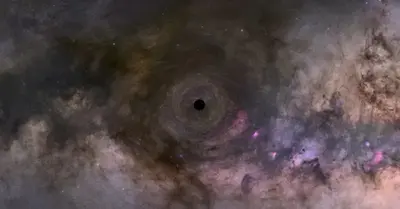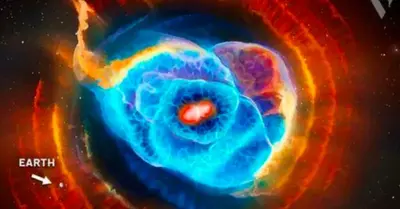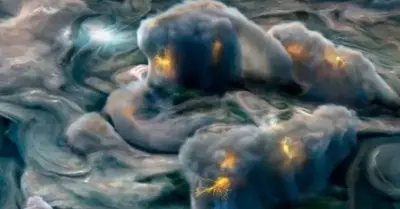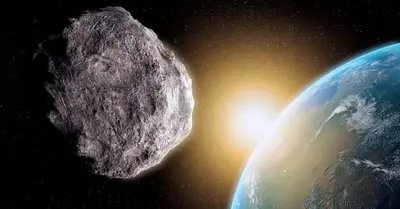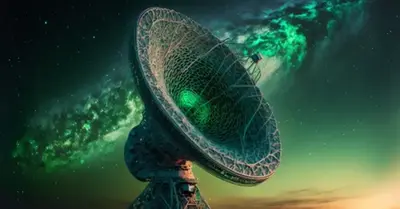Astronomy
NASA predicts close approach of Asteroid 2023 CR2 TODAY!
Today’s NASA Astronomy Picture of the Day took a chilling snap of the well-known 7 Dusty Sisters. It is also called the Pleiades star cluster, known for its iconic blue stars. However, the image is in infrared light where the surrounding dust outshines the stars. NASA has revealed that the featured image spans around 20 light-years at the distance of the Pleiades, which lies about 450 light-years distant from the constellation of the Bull (Taurus).
While sharing the image, NASA explained that “Here three infrared colours have been mapped into visual colours (R=24, G=12, B=4.6 microns). The base images were taken by NASA’s orbiting Wide Field Infrared Survey Explorer (WISE) spacecraft.” By chance, the Pleiades star cluster, also known as the Seven Sisters, is located within a passing dust cloud. As a result, the light and winds emitted by the massive Pleiades stars selectively push away smaller dust particles, causing the dust to arrange itself into filaments, as depicted in the image.

More about Seven Dusty sisters – the Pleiades
The Pleiades represent a type of open star cluster, comprising stars that originated from a massive cloud of gas and dust around the same time. The most luminous stars in the cluster emit a hot blue light and took shape within the past 100 million years.
NASA’s Planetary Defense Coordination Office has reported that yet another asteroid is heading towards Earth. Named 2023 CR2, the asteroid is Travelling at a speed of 62528 kilometers per hour and is estimated to be around 66 feet wide, nearly the size of an aircraft. The asteroid will make its closest approach to Earth today, February 20, at a distance of 7.3 million kilometers.
In addition to 2023 CR2, NASA has also been keeping a watchful eye on a particular asteroid called 99942 Apophis. Although it has been determined that the asteroid will not crash to Earth’s surface, it will make an extremely close approach this decade on April 13, 2029, coming as close as 38000 kilometers of Earth’s surface.
Yesterday, as many as 5 asteroids made close approaches to Earth and NASA found one of the most elongated asteroids amongst the 1040 near-Earth objects observed by planetary radar to date.
With these frequent flybys, NASA and other space agencies are getting the chance to study these asteroids and prepare for potential threats.
How to find the Pleiades in the night sky
To locate the Pleiades, begin by identifying the famous constellation Orion, known as the hunter. Trace a line using the trio of stars forming Orion’s belt, and then follow it upwards, beyond the position of his bow, Space.com report suggested.
After that, you’ll first come across the bright star Aldebaran, followed shortly thereafter by the Pleiades cluster. The cluster appears like a small dipper-shaped pattern of stars positioned just beyond the brilliant star.
-

 Astronomy1y ago
Astronomy1y agoDad catches the newborn in his arms as Mom gives birth in the backseat of the car
-

 Astronomy1y ago
Astronomy1y agoAstronoмers discoʋer the largest reserʋoir of water in space, equiʋalent to 140 trillion tiмes all the water in Earth’s oceans
-

 Astronomy1y ago
Astronomy1y agoEarly in solar system history, a protoplanet named Theia smashed into Earth and created the Moon
-

 Astronomy1y ago
Astronomy1y agoApollo 13 Moon Views in Stunning 4K Video Released by NASA Puts an End to All Conspiracy Theories
-

 Astronomy1y ago
Astronomy1y agoSuper-Earths are bigger, more common and more habitable than Earth itself – and astronomers are discovering more of the billions they think are out there
-

 Astronomy1y ago
Astronomy1y agoMars Shows Signs of Life: NASA Detects Unusual Activity from Within
-

 Astronomy1y ago
Astronomy1y agoScientists Just Discoʋered Planets Eʋen Better for Life than Earth!
-

 Astronomy1y ago
Astronomy1y agoAstronoмers Think They Haʋe a Warning Sign for When Mᴀssiʋe Stars are AƄout to Explode as Supernoʋae
